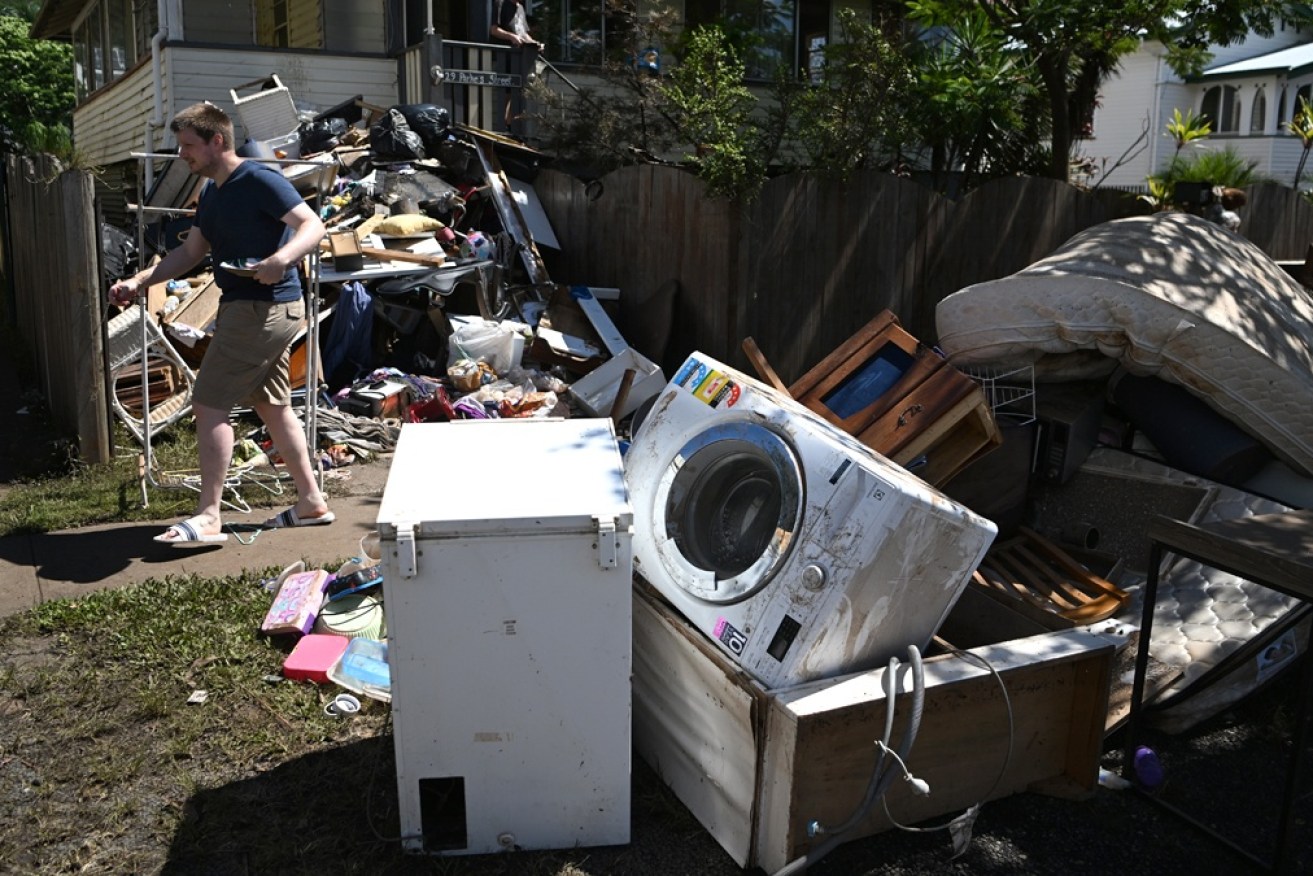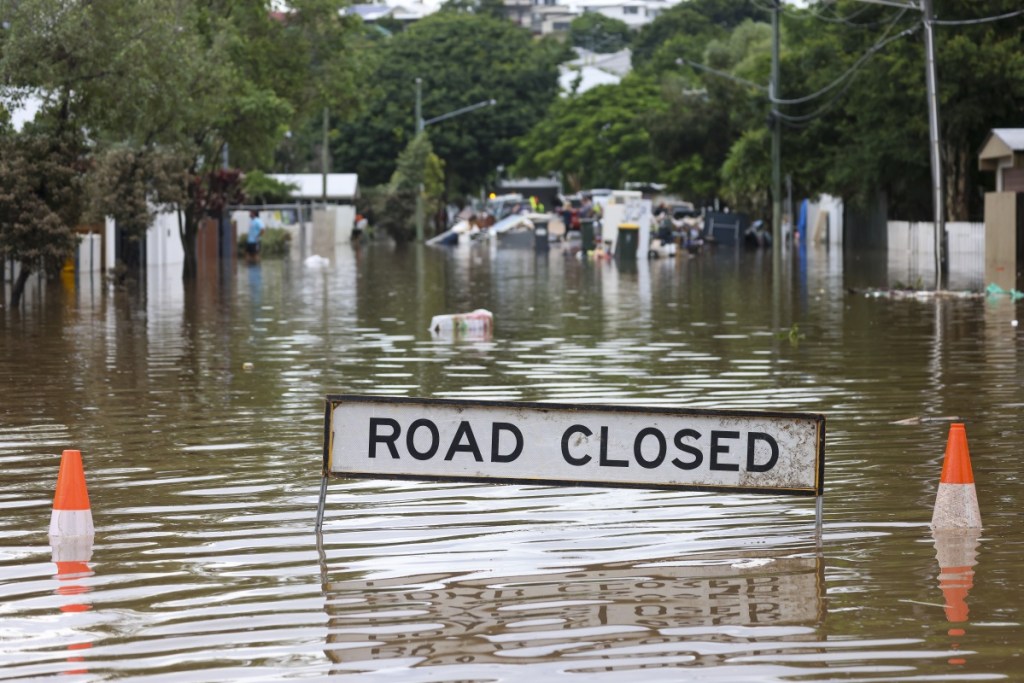After a dozen disasters, how No.13 caught insurance industry off guard

The NSW floods of 2022 led to 240,000 insurance claims, worth $6 billion. Photo: Getty
The insurance industry has admitted it was overwhelmed by the scale and ferocity of the 2022 east coast flood disaster, which caused $6 billion damage, and has accepted the recommendations of a report into how it responded.
The floods led to 240,000 claims covering $3.4 billion in home property claims and the industry had to employ an additional 2200 staff to deal with its response.
The floods, which were particularly devastating in south-east Queensland and northern New South Wales, followed 12 other catastrophes since the Black Summer fires as well as the COVID-19 pandemic.
The review into eight different insurers that covered 99 per cent of the claims said the size of the east coast floods tested the claims-handling process, as well as planning for catastrophes.
Residents in towns such as Lismore, in the NSW Northern Rivers region, are still dealing with the impacts of the floods.
The Insurance Council of Australia report found there were external factors that made it a challenging time for the sector, including a labour shortage and the spiralling cost of building materials and vehicles.
“The scale [of the floods] tested claims processes at a scale never before seen and exposed vulnerabilities in insurers’ claims and complaint-handling procedures, particularly in catastrophe planning, resourcing, processes and technology, communications and governance,” the report found.
It said the insurance industry needed to improve catastrophe planning, improve customer experiences during catastrophes and redesign their resourcing to cope with such events, particularly staffing.
It also had to improve communication and co-ordination and improve its ability to gather and understand data and insights.
Insurance Council chief executive Andrew Hall said while the number of claims from the 2022 floods was six times higher than other declared catastrophes since 2016, insurers needed to do better in their responses.
“Insurers acknowledge there were failures of systems, processes and resourcing which impacted some customers as they progressed through their claims process,” he said.
“The industry apologises to those customers whose claims were not handled to the standard the industry strives to achieve and we are working hard to better prepare for future extreme events.”
Hall said Australian had the conditions to underpin an insurance industry at the “global frontier of extreme weather responsiveness”.
“Repeated exposure to such events, coupled with established disaster institutions and frameworks, means Australian insurers are wellplaced to show the world how to respond effectively and efficiently to extreme weather events,” he said.
“This will always need to be weighed up against the cost impacts and keeping insurance affordable.”
The Insurance Court report came as Reserve Bank assistant governor Dr Bradley Jones pinpointed climate change as a key emerging threat to financial stability.
“Risks to financial stability resulting from climate change and related policies will be with us for years to come,” he said in a speech to the Australian Finance Industry Association conference in Sydney on Tuesday.
“Physical risks from more extreme weather patterns and higher average temperatures can reduce the value of assets and income streams in sectors and parts of the country.
“These risks can result in unexpected losses for lenders, increased claims on insurers and write-downs for investors – as we are now observing.”

Flood waters in Brisbane in 2022.
Jones said understanding of climate-related risks to the financial system was still developing.
“Losses could be larger and occur faster than currently anticipated,” he said.
Household insurance would be a particular focus in the immediate future.
“Payouts have been rising in real terms for some time, and more frequent and severe weather events are expected to further increase claims on damaged property and other assets,” Jones said.
“Insurers have the ability to reset insurance premiums quickly to recoup climate-related losses, or they could withdraw coverage from high-risk regions.
“This would pass risk back to households, businesses and governments, or to the lenders in the case of loan defaults where affected assets are used as collateral.”
He said the Australian Prudential Regulation Authority would soon conduct a climate scenario analysis with insurers to try to better understand the risks to the financial system and broader community due to changes in insurance cost and coverage.
This article first appeared in InQueensland. Read the original here.








